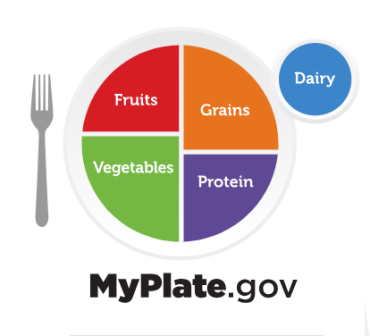Don’t let dinner turn into a battleground with your picky eater
6 strategies to encourage a healthy diet in autistic children with food aversions
Every parent knows the frustration of mealtimes with a picky eater. Every bite of something new, especially if it’s green, is a hard-won battle requiring begging and bargaining. Over time, exhaustion sets in—and with it the resolve to introduce new foods.
For parents of autistic children, picky eating can be an even bigger challenge. Many autistic children have sensory preferences that cause aversions to certain textures, smells and tastes. Some only eat crunchy foods like chips or crackers, while others prefer creamy foods like soup or yogurt. In either case, sensory aversions can put major limitations on the different types of foods kids are willing to eat.
“The way people with autism experience sensory input can lead to a narrower range of accepted food, and this selectivity often leads to unhealthy food choices, like high calorie/low nutrient foods or fewer choices of fruits, vegetables and whole grains,” says Dr. Sandhyaa S. Iyengar, M.D., M.P.H., attending physician at the Children’s Hospital of Philadelphia, an Autism Speaks Autism Care Network (ACNet) site.
For an autistic child who only eats chicken nuggets, trying a piece of broccoli for the first time can be a frightening new frontier—so it’s important for parents to go slowly when they introduce new, healthier options. This process requires a lot of time, patience and persistence—and often, support from the professionals.
“The main idea is to go slow, build momentum, build success, and don’t overwhelm the child so you don’t get refusal or avoidance of the task,” says Dr. William Sharp, Ph.D., psychologist and program director for the Marcus Autism Center in Atlanta, another ACNet site.
Dr. Iyengar suggests that parents and caregivers build a team to help them navigate feeding issues. A registered dietician, an applied behavior analysis (ABA) therapist or child psychologist, and an occupational therapist is a good place to start. These professionals can help parents create a plan for introducing new foods, work with the child’s sensory preferences and learn how to reinforce positive behaviors.
If your child is newly diagnosed or you don’t yet have an existing care team, check if there is an ACNet site near you. ACNet clinicians are specifically trained to support autistic children and their families with the latest advancements in person- and family-centered care.
While difficult, expanding an autistic child’s tolerance for nutritious foods is critical for their long-term health. Healthy eating has been shown to have powerful benefits for the mind and body, preventing chronic diseases like obesity and diabetes as well as reducing stress, anxiety and depression. With autistic children being particularly vulnerable to weight gain resulting from medication use, sedentary lifestyles and feeding issues, keeping nutrition top of mind is more important than ever.
Here are six strategies you can implement at home to help your picky child with autism eat a more balanced diet
#1: Start small and go slowly
No matter what your end goal is, it’s important to take baby steps and meet the child where they are. Dr. Sharp recommends starting out by identifying the foods that your child is comfortable eating, even if they are not their favorites. For example, a child might be willing to eat apple slices, though they do not routinely seek them out as a snack. Over time, try to integrate apple slices and other tolerated foods into the child’s daily or weekly diet.
Once those foods are fully accepted, you can gradually begin to add new foods. While you may be tempted to try to introduce new foods during mealtimes, Sharp recommends starting out with one or two 5 to 10-minute scheduled practice sessions a day. That way, if the child reacts poorly to a new food, the whole meal is not derailed.
Baby steps are critical here as well—you should only begin with tiny quantities. “Oftentimes, when caregivers first start presenting new foods to a child, they present a full portion. For example, instead of presenting just one blueberry, the parent will present a bowl of blueberries. Visually, that signals to the child that they must eat the entire bowl. That’s an overwhelming demand—it’s an expectation that the child should not be asked to meet,” he explains.
For better results, try to present just one bite of the new food and only prompt the child to eat the food once or twice during the session. If the child eats it, don’t add more bites—end the session on success. If the child does not eat it, reduce the size of the bite or try a different food. If you get to the point that the child eats the same food item three days in a row, you can make a small change—either increase the number of bites or introduce another food item.
“Once the child has become consistent with eating the food item at a good portion size, you can incorporate it into their meals. As the child learns to accept more healthy food items, you can start replacing the volume of preferred food items on their plate with those new healthy items. Your goal is to slowly start balancing the plate in line with the MyPlate recommendations from the government. Just remember that MyPlate is an ideal—something that you should be working toward. It’s aspirational,” Dr. Sharp adds.
#2: Keep in mind sensory preferences
How do you choose what new foods to introduce into your child’s diet? Dr. Iyengar recommends choosing foods that are similar to the child’s preferred foods. “In general, dietary changes for kids with autism are most likely to be accepted if the new foods are similar in texture, color and flavor to what they’re already eating and if those changes are implemented slowly.”
For example, a child who loves crunchy cheese puffs might be willing to try thinly sliced carrots dipped into a cheese sauce. A child who likes grilled cheese might be open to eating grilled cheese with a slice of tomato. The goal should be to try to meet the sensory needs of the child but take a small step in a healthier direction.
Another approach is to expand a child’s flexibility with a food item that they enjoy. For example, if they are only willing to eat one type of yogurt, try giving them a different flavor or brand of yogurt. Gradually, you will build momentum and flexibility that will help you introduce a wider variety of foods.
#3: Offer some choices
Every child likes having autonomy and choice over the food that they eat. Giving choices when introducing new food items and allowing the child to pick the size of the bite can make a big difference in their willingness and enthusiasm to eat new things.
“Even young children can participate in their food choices and food preparation, and I find that goes a long way,” says Dr. Iyengar. “That can look like taking your child to the grocery store to choose their own healthy snacks. It can look like getting your child involved in the meal prep—maybe they can cut their own cucumber or apple for a snack. They have wonderful child-safe knives now that we recommend down to our 18-month-old kids.”
#4: Reduce grazing
Many autistic children with food selectivity prefer eating snack foods like chips or cookies. Often, instead of sitting down for meals, they “graze”, or snack, throughout the day. But while grazing does give children some independence over their eating habits, it can be problematic. Grazing can encourage overeating, particularly on foods with low nutritional value.
“One of the first things we ask parents to do is to start reducing gradually grazing and make preferred foods occur at mealtimes,” says Dr. Sharp. “For many parents, that seems to be a counterintuitive piece of advice. They’ll say, ‘you want me to fill up their plate with Doritos and chicken nuggets?’ And the answer is yes at first, because it’s better to limit the total volume at meals and reduce grazing so that you can keep track of how much the kid is consuming overall.”
#5: Embrace routine around mealtimes
Autistic children thrive on routine, so one of the most important steps to improving their diet is building mealtimes and snack times into their daily routine. Approaching the goal of healthy eating as a family can be very helpful.
“Some things that I talk through with my families is how implementing a healthy eating program together as a cohesive unit can go a long way,” says Dr. Iyengar. “Sharing regular meals at the table is something to aim for versus the grazing approach or couch meals. If a parent is eating something, the child will be more likely to try that or participate in the meal. Family meals also allow you to take breaks in the meal—having a conversation can help slow down the rate of eating and that will often help with portion control.”
Visual supports can be a useful tool for creating and communicating routines around mealtimes. Dr. Iyengar recommends a few different approaches:
- Set a timer that marks the duration of the meal. That way, meals become a clear time-bound activity.
- Show the child a visual of the appropriate portion sizes that they should be eating. That might be a measuring cup, a bowl or a picture of the food in their hand.
- Make a schedule of activities for the entire evening that includes things like homework, an after-school snack, bathtime and dinner time. Mealtimes should be built into the context of the evening so that the child knows what to expect.
#6: If all else fails, sneak in veggies
Expanding the diet of picky eaters is a long and demanding process that won’t happen overnight. In the meantime, if you’re worried about your child’s nutritional intake, getting them on a multivitamin and finding ways to sneak nutrients into their accepted foods may be the best way to go.
“Some parents add finely chopped or pureed vegetables to smoothies, soups or tomato sauces. If the child likes the texture of yogurt or juice, that’s a good method,” says Dr. Iyengar. “Zucchini is an example of a vegetable that nearly boils down to nothing—it’s not a texture you can really detect—so that’s often a successful one. Cauliflower is another example. Cauliflower in mac and cheese is nearly impossible to detect. You’re expanding the kid’s dietary nutrition but in a way that they don’t realize.”
Swapping foods with healthier alternatives, like whole grain instead of white pasta or bread, is another successful approach. Likewise, mixing water into juice can improve hydration while staying in the child’s comfort zone.
With these strategies, parents can find peace of mind as they work on expanding their picky eater’s palette for healthy foods.
Learn more:
- View our guide to creating visual supports
- Download our Guide to Exploring Feeding Behavior in Autism
- Check out our Resource Guide to find psychologists, therapists and other professionals near you












